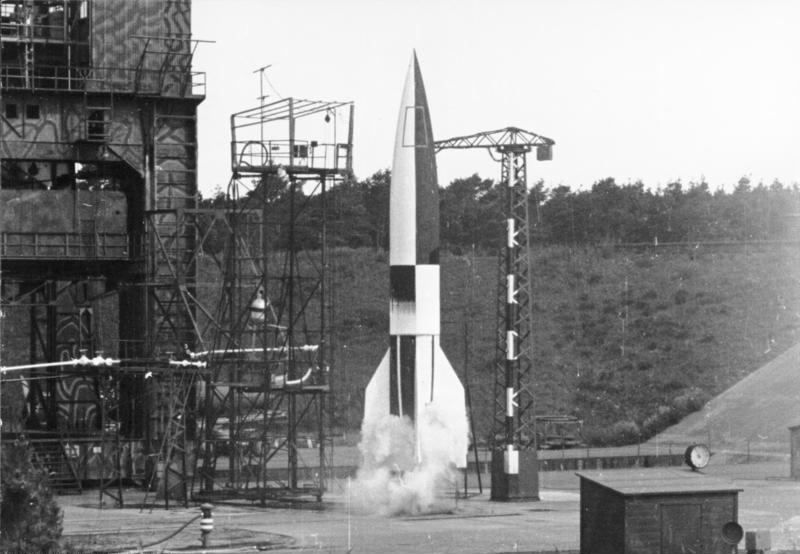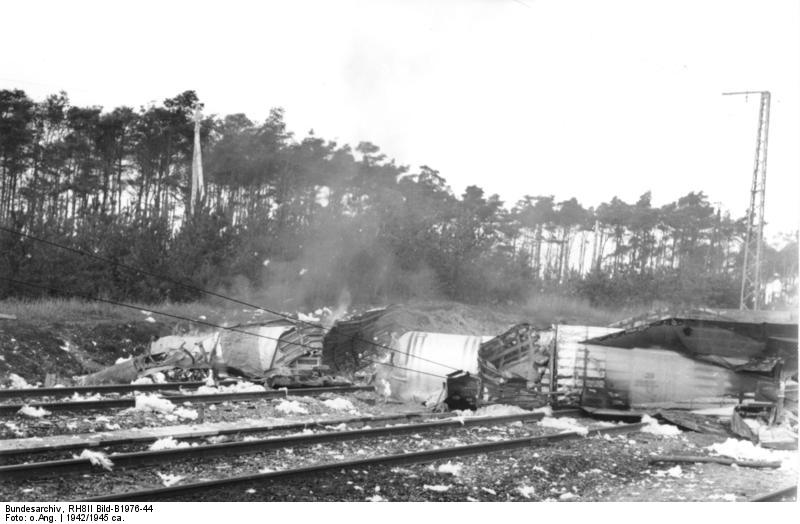Mountain of darkness
When we consider the history of futurism we understand that it was a pre-illustration of things to come, the manifest from 1909 an outlook to the 20th century from its beginning. And yes, the reality prooved it right, with the development of technology, industrialisation - but also of war. To illustrate the dark synergy of these elements as part of the futurist history i will continue my lecture with a report on the 'V2', a 'secret weapon' of Germany in WW2. It accompanies the visionary aspects of futurism with the destructive ones.
Vergeltungswaffe 2
By the end of the second World War germany could not defend its cities against massive bomb attacks by allied forces. This illustrated to the germans that the NS propaganda about a close victory might be false. But the regime reacted in its characteristic aggressive style: New 'retaliatory weapons' (Vergeltungswaffen) were developed and produced with enormous effort and decisiveness.
The second and most effective of these was the 'Vergeltungswaffe 2' or 'V2' rocket, with the technical name 'Aggregat 4' or 'A4'. It could carry a 1000 kg warhead over a distance of 300 km - enough to attack London from the european mainland. These military rockets used completely new technology in several fields, and due to the high speed no defense was possible. Still the military effect was minimal.
Quality management in Dora-Mittelbau
Let us now look closer into the challenges of the A4 project, first into the technical ones: The liquid rocket propulsion technology was realised for the first time. Now let us consider the challenges of mass production of such a device, under the constant threat of allied bomber attacks. A huge production plant was built inside a mountain in the center of Germany: Dora Mittelbau. Until the end of the war it manufactured 6.000 of the rockets, each of which 14 m long, 13,5 tons heavy.
Stepping into the giant underground factory we see an impressive realisation of the futuristic vision. Modern concepts of assembly line production, research and development activity with permanent optimisation of procedures and a number of technologies that were not applied before, let alone in large scale industry production.
Now, asking any rocket engineer about the biggest part of his work, we will hear: “Quality management.” Without QM we would not have seen any space projects. This is due to the fact that in rockets a mistake in the smallest part is likely to have critical effects on the functioning of the whole device. A hole drilled to big, a tube soldered incorrect, a screw tightened to little - and the rocket will explode at the start or crash prematurely.
Another element often considered crucial for the production of aerospace and space technology is a skilled workforce. This was not available in Germany in the last years of the war - skilled engineers were either fighting at the front, already killed or working in other factories producing material needed for the war.
Now how is it imaginable that a mass production of a new technology under these circumstances can be successful? A dark thesis on the special type of quality management that was applied in Dora Mittelbau is presented in the lecture, supported by some statistics from the project: 9000 victims were attributed to V-2 attacks, while 12000 forced labourers were killed in the production.


